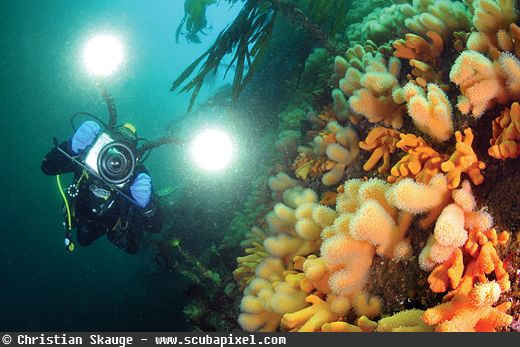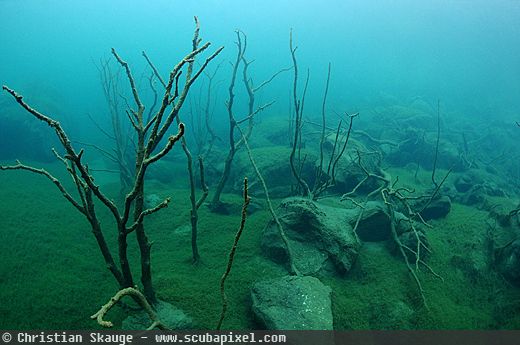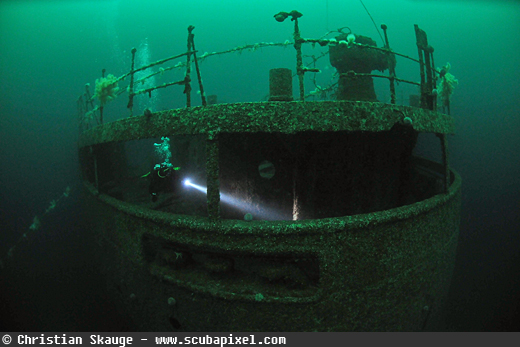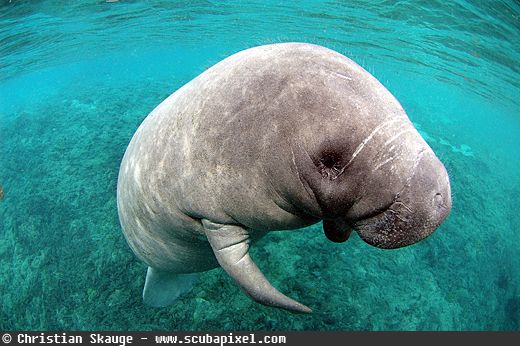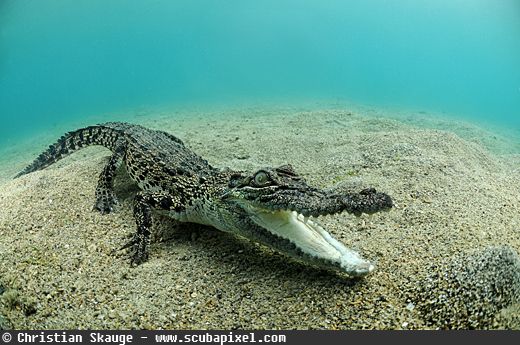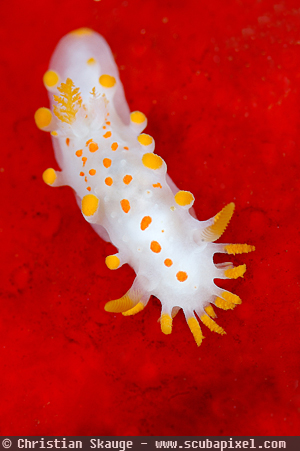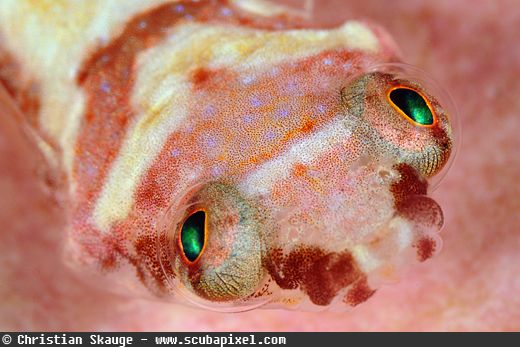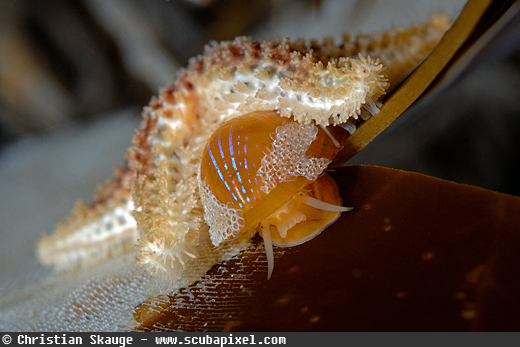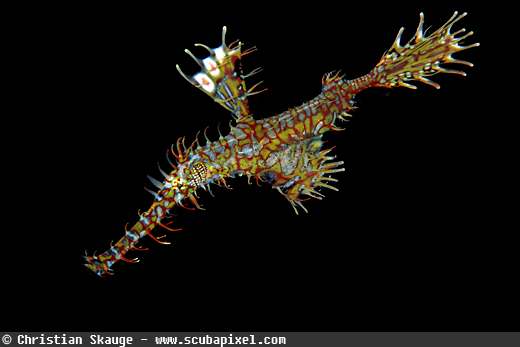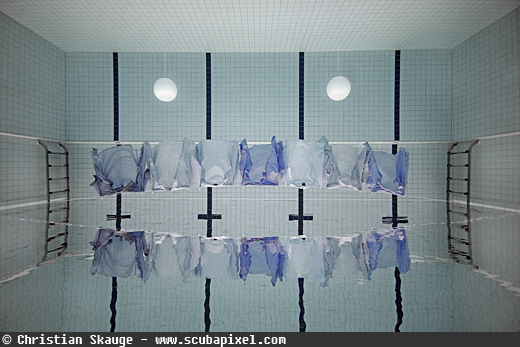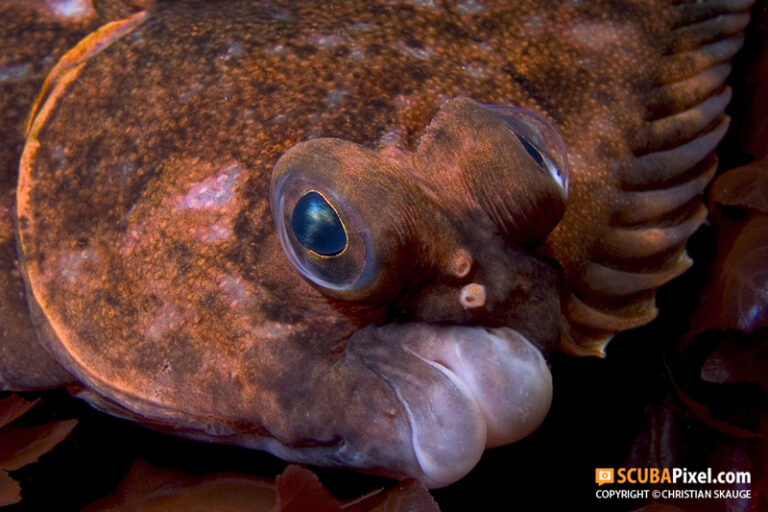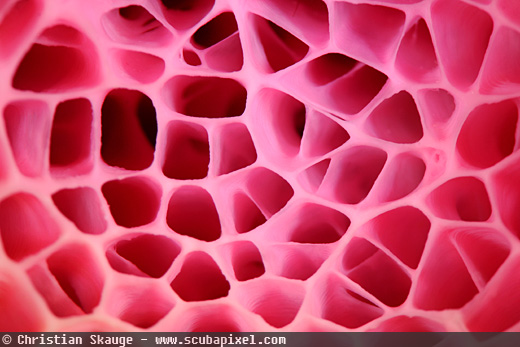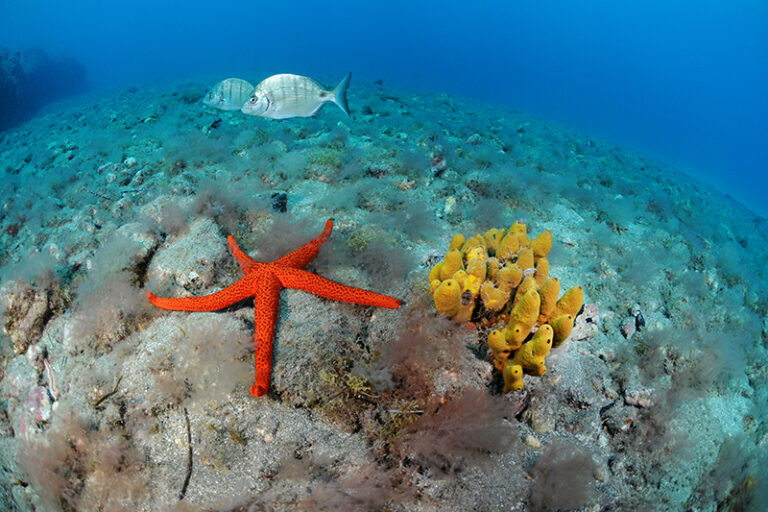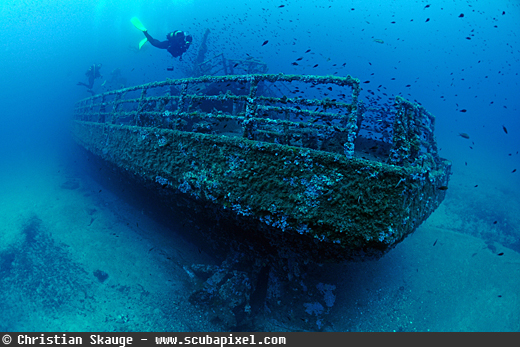
Wreck of the KT-12 located outside Orosei, Sardinia.
The point of having a portfolio is to showcase your very best images to potential clients, to gain the respect of your peers, to show your ex-boss you actually made it and last but not least, to impress your mum. Pretty much in this order. But that’s when you have to stop and think: Should impressing your parents count when you plan to spend time and money on creating a website? Of course not!
You will get all the admiration and likes you deserve on Facebook, so your portfolio should only contain those few, top-quality images that define you as an underwater photographer. Think about what you like to shoot, because you’re most likely better at that than what you don’t enjoy and don’t shoot too often.
Still, a portfolio needs to show a broad range of different images – at least if you’re planning to hitch some new clients with through your website. They might consider using you for a commercial shoot in a pool or to send you off on a trip to shoot images for a magazine feature, and they need to know there’s a reasonable chance you’re worth the money.
If you only shoot macro photography that’s fine, but it should come across when viewing your portfolio. If you include wide angle it better be pretty good – and vice versa. If wrecks and caves is your thing, don’t include mediocre macro shots.
The kind of images you include could be many things, but there are some rules of thumb you might want to consider. I’ll talk you through five photos I think it is important for any underwater photographer to have in their portfolio.
1. The Wide-Angle Shot
Wide-angle can be many things, but usually includes reefscapes and/or wrecks. Reef panoramas are always popular, and you can’t go wrong showing off a stunning underwater landscape, diverse fish life or an interesting close-focus wide-angle subject. This is certainly not limited to tropical coral reefs – a great looking cold-water reef or even some fresh water eye-candy could spark some extra interest and set you apart from the crowd.
I chose to include several images in this first category: A cold-water and a tropical reef, as well as a fresh water “reefscape” to show diversity and a different perspective on wide-angle images. It is important to remember that if you can’t show merit in this field, you’ll most likely never be asked by a magazine to do a feature for them.
If reefscapes isn’t you thing, perhaps you like shooting rust. Most of the time a stunning shot showing a whole wreck will work much better than a close-up of some rusty debris. It could be wise not to choose the Thistlegorm or any other wreck that has been shot by thousands of others – some of those images have a pretty generic feeling. That is, unless your shot is truly stunning.
Since I dive mostly in cold waters, a WWII wreck is a natural choice for me, and on the international scene these images often attract some attention just by being different. I chose an image of the stern of the wreck Frankenwald, a 122 meter (400 ft.) German freighter on the Norwegian west coast. I included the wreck of the KT-12 (see photo below title) to show some warm-water merit as well.
2. The Big Animal Photo
Big animals are hard to ignore, be it sharks, whales, mantas or any of the other “classic” choices. If you choose to use any of these animals, make sure the images you present are truly unique – there are millions of great shark pictures out there. I chose a manatee – a cute and adorable animal that attracts lots of attention outside the diving community.
Perhaps you have some great crocodile shots or even an elephant? I have seen people shoot dogs, pigs and whatnot over the years, and surprisingly often these images turn up on newspaper websites. Attracting attention by choosing something a little out of the ordinary might be a good thing, but by all means throw in a shark or two if you have some good ones.
3. The Macro Portrait Shot
I think it is good advice to avoid clownfish and similar clichés – everybody has these shots. Of the five types of images, this is perhaps the category that leaves you with the most room to play, where you can really show that you have the eye and talent to capture a unique image, and that you have the creativity others may lack.
Good choices for your macro portfolio may be nudibranchs or fish portraits. Try to pick images where the viewer immediately connects to the image – eye contact is very important. Remember that many people viewing your portfolio don’t have the same intimate knowledge of marine animals that you do. It is important to choose something that is easy to identify, colorful and striking at the same time.
Striking color and tight, well-composed pictures always make an impression, and for me it is also very important to have a uniform, tidy background to further enhance the subject.
A keen eye is necessary to capture these images, not just knowledge of camera settings or finding critters. I always scout for suitable backgrounds when I dive my favorite sites – and sooner or later there is something sitting on that little red sponge or orange soft coral.
4. The Rare ID or Behavior
Everyone loves to show off pictures of extremely rare creatures – and there’s nothing wrong with that. You must however try to put your fond emotions for an image aside when you consider what to include here – the viewers don’t necessarily share your joy of finding something rare and will quickly dismiss the image if it isn’t stunning.
Showing off some rare critters will, on the other hand, tell people you’re a good diver/critter finder as well as a photographer, and it will increase your chances with the magazines. If you’re able to catch rare or eye-catching behavior it’s perhaps even better that just using a rare animal – it proves you’re not only good when you have plenty of time, you get it done even when the action is happening quickly.
5. The Pool Shot
Most underwater photographers don’t spend much time in pools. This can however be a fun experience and a great opportunity to add something to your portfolio that many potential clients may be looking for. Many commercial shoots are done in the pool, and showing off this experience will open doors beyond exclusively selling images within the dive community or to marine biology book publishers. The opportunity might be to portray celebrities taking part in a TV show in a new and different way, to shoot a baby swimming session or to do an underwater fashion shoot (which has become quite popular).
I chose to include a pool shot set up for a photo competition; something a little different from those typical “nice girl with long hair and too much make-up in flowing dress” images you see everywhere on Facebook. After working for two whole days to get everything right I had a great series of images. This image has been a great door opener, perhaps because non-divers can easily relate to it and are impressed at the same time. The above shot won me a gold medal in the Nordic Championships!
Abstracts and Other Images
If you specialize in other types of images, you will of course have to take this into account when putting together your portfolio. I shoot a lot of abstract images and felt the need to include the photo below, entitled “Conception.
Although it looks like something completely different, it’s actually just a close-up of the leaf of a water lily. I carefully angled the camera and manipulated the depth of field to make it look like genesis.
Unfortunately, images like these are not very sellable, and are probably not what future clients will be looking for – unless they’re publishing an art book.
Other types of images you might want to include in your portfolio could be travel images, landscapes, people or architecture. This depends on what you normally shoot, what you’re good at and last but not least, what you want to sell.
Keep it Clean and Uncluttered
I’m not going to plunge deep into how you should best present your portfolio online, but one thing is very important to keep in mind: Keep it simple! Don’t make your portfolio into a mystery game – present it clean, uncluttered and easy to navigate. And don’t forget to add your contact info on every page!
My own website is perhaps a good example on how NOT to do it – I don’t even have a proper portfolio at the moment. When I started building my website I opted for a searchable, custom gallery that makes finding images easy for magazines and others that might be interested, but I really do need to set things straight and make a proper portfolio showcasing my best images as soon as possible.
We can all agree that there are no easy ways to a stunning portfolio. For most people it takes years to produce a range of great shots within these different categories, and some never make it all the way. It boils down to what you want with your portfolio: If it’s to impress mum you don’t have to take it to a professional level, but if you plan to get actual paid work you need to be determined – and hard on yourself when choosing what to showcase. It’s better to have a smaller portfolio with stunningly beautiful images than having a larger one containing many borderline keepers.
Remember, your portfolio is only as good as your worst image!




